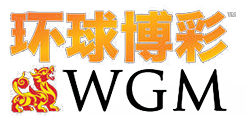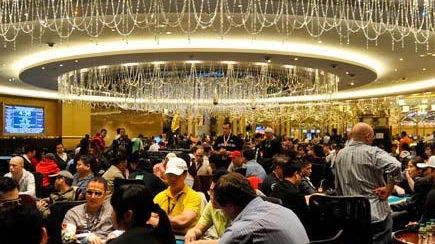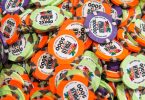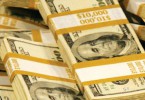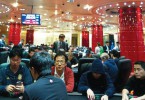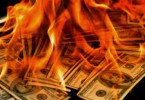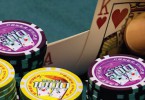This article first appeared in the Sep/Oct 2010 issue of World Gaming magazine.
Poker tournaments are big business, and the big names on the world circuit are the rock stars of the gaming world. Back when I started playing cards being a successful gambler wouldn’t usually get your face on TV or the cover of a magazine, you’d be more likely to be thrown out of a casino or cut off by your bookie for being an expert on the punt! International tournament poker has changed all that.
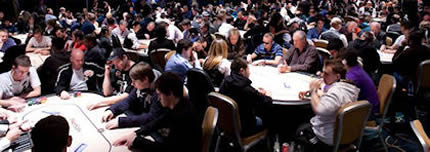
PokerStars are an amazing supporter of big-event live tournament poker. They sponsor 12 poker tours and festivals around the world. These events comprise hundreds of big-money live poker tournaments giving away well over US$100 million a year. And who better to do it, given their online card room has over 36 million members (a number that makes its population almost twice the size of Australia), and they have a new poker tournament starting online every second, 24 hours a day.
The European Poker Tour
John Duthie, now the Chairman of the EPT, was already a successful TV director and high stakes poker player when he won the 2000 Poker Million live on TV, a feat which earned him £1 million and helped popularise poker in the UK.
WGM: John, tell us a little about the creation of the EPT.
JD: It was an idea I had in early 2004 and with the help of all the European casinos involved along with the backing of the original broadcaster, Channel 5 in the UK. With the sponsorship of PokerStars.com we were able to get it up and running within six months.
WGM: What single thing makes the EPT different to other poker tours.
JD: Probably the enormous variety of locations, the different cultures and languages spoken.
Duthie has seen his brainchild flourish into the planet’s richest and most prestigious poker circuit. Each season’s EPT schedule is now firmly established, running from August to May. The EPT show is broadcast to around 40 countries around the world.

Over its first six years the EPT completed 57 separate poker festivals. The highest amount ever won in a single EPT tournament was €2.3 million by Pieter de Korver from the Netherlands at the season 5 EPT Grand Final in Monte Carlo.
Season 6 in 2009/10 was a resounding success with many events enjoying bigger fields than ever before. The €10,000 EPT Grand Final in Monte Carlo is the EPT’s showpiece tournament, and in season 6 it attracted 848 players and a prize pool of €8.48 million. The 2010 PokerStars Caribbean Adventure (PCA), which forms part of the EPT, was the richest poker festival ever held outside of Las Vegas with a prize pool of nearly US$15 million. Sanremo, Italy is home to the final stop on the EPT before the Monte Carlo grand final, and is renowned for its big fields. Season 6 was no different seeing a record-breaking field of 1,240 players. The total prize pool for EPT season 6 was a staggering €56,672,284 created by over 9,000 main event players.
The EPT has just begun its seventh season, which will feature 13 scheduled festivals. It debuted in August in Tallinn, Estonia. Stops on the tour will include the golf haven of Vilamoura in Portugal, ‘EPT Snowfest’ in the stunning Austrian ski resort of Saalbach-Hinterglemm, Germany’s capital city of Berlin, and spectacular iconic festivals of poker such as EPT London, the PCA and the EPT Grand Final.
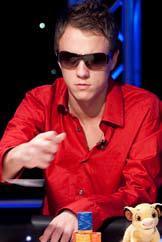
The EPT even has its own awards ceremony. These awards include the year’s top achievement as voted for by EPT players, and the year’s best online qualifier, Omaha player, mixed game player, heads-up player and all-round player.
Players can qualify for every EPT event on PokerStars.com. More than 2,000 of those who competed in season 6 main events won their seat on PokerStars, winning millions of dollars between them. The biggest return on investment was achieved by 23-year-old EPT Grand Final main event champion Nicolas “niccc” Chouity who won his trip to Monte Carlo in a $22 re-buy tournament on PokerStars and went home to Beirut €1.7 million richer.
The EPT’s only possible rival for the title of the world’s premier poker tour is the World Series of Poker in Las Vegas, but that is a gruelling six weeks of poker in the Las Vegas pounding summer heat, once a year. Sure, the WSOP also has a circuit series, but that is a long way behind the EPT in the size of the events, the prize money and the prestige.
|
The growth of the EPT
|
|||
|---|---|---|---|
|
Season
|
Number of players
|
Total prize pool
|
Number of nationalities represented
|
|
6 (2009-2010)
|
9,157
|
€ 56.7 million
|
97
|
|
5 (2008-2009)
|
7,901
|
€ 54.9 million
|
97
|
|
4 (2007-2008)
|
5,902
|
€ 38.2 million
|
75
|
|
3 (2006-2007)
|
3,481
|
€ 19.6 million
|
75
|
|
2 (2005-2006)
|
2,009
|
€ 9.8 million
|
No Data
|
|
1 (2004-2005)
|
1,468
|
€ 4.8 million
|
No Data
|
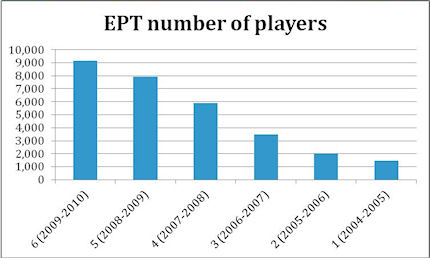
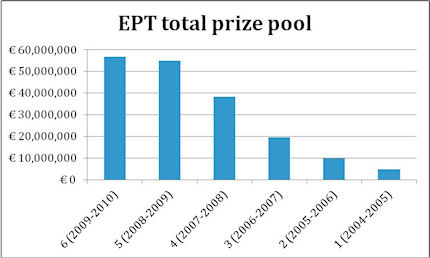
|
EPT season 7 schedule
|
||||
|---|---|---|---|---|
|
Event
|
Main Event Dates
|
Venue
|
Buy-In
|
Cap
|
|
EPT TALLINN
|
11-16 Aug 2010
|
Swissôtel
|
€4,000 + 250*** 62,600 + 4,000 EEK
|
600
|
|
EPT VILAMOURA
|
28 Aug – 2 Sep 2010
|
Solverde Casino
|
€5,000 + 300*
|
700
|
|
EPT LONDON
|
29 Sep – 4 Oct 2010
|
Hilton Metropole
|
£5,000 + 250*
|
1,000
|
|
TBC
|
26-31 Oct 2010
|
TBC
|
€5,000 + 300
|
TBC
|
|
EPT BARCELONA
|
22-27 Nov 2010
|
Barcelona Casino
|
€5,000 + 300
|
1,000
|
|
EPT PRAGUE
|
13-18 Dec 2010
|
Hilton Prague
|
€5,000 + 300*
|
700
|
|
PCA
|
8-14 Jan 2011
|
Atlantis, Bahamas
|
$10,000 + 300*
|
1,600
|
|
EPT DEAUVILLE
|
25-31 Jan 2011
|
Deauville int. Centre
|
€5,000 + 300**
|
1,000
|
|
EPT COPENHAGEN
|
21-26 Feb 2011
|
Casino Copenhagen
|
35,000 + 2,250 DKK**
|
600
|
|
EPT SNOWFEST
|
20-25 Mar 2011
|
Alpine Palace
|
€3,500 + 250*
|
500
|
|
EPT BERLIN
|
5-10 Apr 2011
|
Grand Hyatt
|
€5,000+ 300
|
1,000
|
|
EPT SAN REMO
|
TBC
|
TBC
|
€5,000 + 300*
|
TBC
|
|
TBC
|
TBC
|
TBC
|
€10,000 + 600
|
TBC
|
| * 3% of tournament prize-pool will be withheld to cover the costs of floor staff and dealers. | ||||
| ** 4% of tournament prize-pool withheld for government taxation | ||||
| *** 5% of tournament prize-pool withheld for government taxation | ||||
The Asia Pacific Poker Tour
Our own APPT is very much a younger cousin of the EPT. APPT President Jeffrey Haas founded the tour in 2007. Macau-based Australian Danny McDonagh has been its Tournament Director since the very start. The tour has held events in Macau, South Korea, New Zealand, the Philippines, and its Grand Final is in Australia in December each year. Some APPT events have been filmed for television, but TV coverage has not yet been widespread.

The APPT was responsible for bringing the first major government-sanctioned real-money Texas holdem poker tournaments to China (in Macau) and Korea (in Seoul). The APPT Macau in November 2007 was the first ever poker tournament held in Macau. With 352 entrants, it was also the-then largest poker tournament in Asia (a November 2006 event in Singapore held the previous record with 313 entrants).
The largest APPT event ever was the 2007 grand final, which had 561 entrants and a prize pool of US$3,150,800. The largest APPT event outside of the Sydney grand final was in Macau in 2008, with 538 entrants. In the fifteen APPT events held so far, the average number of entrants has been 358.
The APPT certainly hasn’t gone backwards, but also hasn’t experienced the growth explosion of poker around the world.
|
Asia Pacific Poker Tour
|
Season 1
|
Season 2
|
Season 3
|
|---|---|---|---|
|
Year
|
2007
|
2008
|
2009
|
|
Started
|
August
|
September
|
August
|
|
Finished
|
December
|
December
|
December
|
|
Main event players
|
1,418
|
1,772
|
1,407
|
|
Total prize pool
|
US$5.6m
|
US$5.0m
|
US$5.9m
|
|
Stops
|
Macau
|
Macau
|
Macau
|
|
Sydney
|
Sydney
|
Sydney
|
|
|
Manila
|
Manial
|
||
|
Seoul
|
Seoul
|
||
|
Auckland
|
Auckland
|
||
|
Cebu
|
Season 4 in 2010 saw a change in the APPT schedule. We’ve already had events in Manila (in March) and Macau (in May), with Auckland, Cebu, and of course the Sydney grand final to come. The Manila and Macau events combined had 772 runners and a total prize pool of US$2.7m.

So far the APPT has produced 15 different winners in the 15 festivals that have been held since its inception. The biggest winners were Grant Levy in 2007 and Martin Rowe in 2008 who each picked up AU$1 million for winning that season’s APPT grand final in Sydney.
APPT main event winners
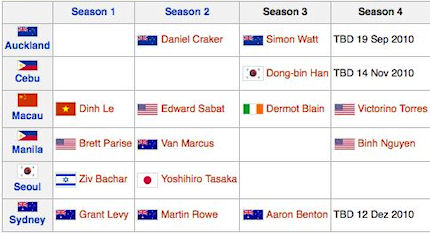
What the pros say
I contacted a number of big name professional poker players who play on the world stage to discuss their thoughts on the EPT and the APPT. Here’s what they had to say.
Greenstein is one of the biggest names in poker, with millions in career winnings and several major titles under his belt. He’s won three World Series of Poker bracelets and three World Poker Tour titles – results that have helped him earn close to US$7 million in live tournaments. He’s also a feared cash game player, appearing regularly in the Big Game at the Bellagio and on TV shows like High Stakes Poker in the US. He has also proved to be a great ambassador for the game by donating much of the money he wins to various charities around the world.
BG: EPT events can be very tough, especially the EPT main event. At the smaller events you can anticipate some soft spots if there are a lot of locals playing. In APPT events, you are disappointed if less than half of the table are weak players. And you expect to have at least one complete novice who usually plays table games, but stumbled upon the poker tournament.
Greg won the World Series of Poker main event in 2004 after qualifying on PokerStars – a victory worth a massive US$5 million. Since then he’s proved to be more than a one-hit wonder. He’s made several other WSOP final tables, including a third place finish in the US$40,000 No Limit Hold’em event in 2009 for a US$774,927 payday. September 2007 also saw Greg win a World Championship of Online Poker (WCOOP) event for US$168,362 and captain Team USA to a PokerStars World Cup of Poker (WCP) victory.
GR: Obviously, the EPT is better established than the APPT, having had several more seasons to create and build upon its events. Also, the poker boom is newer in Asia than in Europe, so the typical player is more experienced in the EPT events. This creates greater value for the good player to win money in the APPT, as compared to the higher buy-ins and larger fields and prize pools in the EPT.
Personally, if it weren’t for the long flights from the Eastern US, I would much prefer the APPT, simply because I love Asian food and culture. The only thing better than Thai food is Korean food, both closely followed by Japanese and Chinese food!
Frenchman Bertrand ‘ElkY’ Grospellier is one of the most phenomenal poker talents to emerge in the last few years. He began a hot streak in January 2008 that shows no sign of stopping. First came a win at the 2008 PokerStars Caribbean Adventure (PCA) for US$2 million, followed by a WPT title worth US$1,411,015. He then steamrolled into 2009 with a win at the PCA high roller, plus top-three finishes at the EPT Deauville high roller, NBC National Heads-Up Championship and the WPT World Championship. He then scored two bracelets wins at the 2009 PokerStars WCOOP.
Elky:The EPT is the richest poker tour in the world, and growing ever bigger. A lot of the players are regular on the tour, but there are still a lot of locals and PokerStars qualifiers. As for APPT, it’s a great opportunity for people living in Asia to attend poker tournaments without traveling all over the world, so I’d say that the core of players is different. Both are very well organized and hugely successful tournaments.
One of the advantages the APPT has is that since it’s still a bit smaller, perhaps it’s a bit more convivial group. The EPT is bigger, has bigger buy-ins and bigger fields of course, which brings bigger prize pools! It also has more variety of places and more stops.
Where to from here for the APPT?
There is no doubt the APPT has the potential to become like the EPT one day – maybe even bigger and better. We all know that if you walk into any casino around the world you will see many Asian faces. Asians are intelligent, love to take calculated risks and love a competition. In many ways, the big-money poker tournament is perfectly suited for the Asian player.
So what’s holding back poker in Asia right now? A few things. Firstly, poker was a game that already had a foothold in the US and even in Europe. But poker is a complete newcomer to Asia. Confusing the matter even more is that there are many Asian cards games that Asians refer to as ‘poker’, but really they bear no resemblance to no limit holdem: the game that is played in big international poker tournaments. There is a lot of work to be done in teaching those in the Asian region the basics and then the nuances of this wonderful game.
Television coverage is a big part of this education process, which leads to the next issue. There is not enough poker on TV in Asia. Television coverage is a component in building the game not just because of the educational effect, but also because of the fact it creates what I call a ‘popularity loop’. People see poker on TV and enjoy it, learning about the huge amounts of money they can win and the TV stardom on offer. This encourages more people to enter the next big televised tournament, which in turn builds the prize pool even larger, offering even greater fame and stardom. The whole cycle begins again, spiralling ever higher and higher.
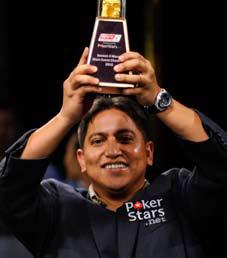
Bigger prize pools and more characters and drama on the TV coverage encourages television executives to buy the show, which means it is shown in even more countries. This ongoing ‘popularity loop’ is precisely what happened in the case of the EPT. Once critical mass is hit, the loop spins bigger and faster and poker explodes
This is yet to happen in Asia in a significant way. The only Asian country that has substantial and regular poker on TV is the Philippines, and it’s no surprise that the Philippines, despite not being the richest country in Asia, has a thriving poker industry. There are 38 card rooms across the nation led by the Metro card room in Manila, which at about 30 tables makes it the largest card room in Asia. If PokerStars are able to get the APPT shown regularly in most Asian countries, the game will explode here.
The APPT has a long way to go to catch the EPT. The buy-ins for the APPT range from about US$2,000 to about US$5,000. The EPT has buy-ins ranging from about €4,000 to about €10,000, about 2.5 times higher.
The APPT experimented with high roller events with buy-ins around US$20,000, then dropped the high-roller event buy-ins down to about US$10,000, but the demand for high roller events is not strong yet. The EPT has strongly supported high roller events with buy-ins as high as €$25,000, about three times the APPT equivalent events.
The APPT prize pools each year average around US$6 million over five events, compared to the EPT’s US$75 million over 13 events. The enormous PCA event alone, held every January, has a total prize pool around US$15 million.
There’s little difference between the quality of the staff on either tour. Thomas Kremser is Tournament Director of the EPT, and he and his team do a fine job. Thomas is friendly but firm, a typically precise German, who made his name as tournament director of the Channel 4’s groundbreaking Late Night Poker and various other televised tournaments. However, the APPT’s Tournament Director Danny McDonagh is equally professional and at various times I’ve described him as the best tournament director in the world. Danny has a way of befriending the players and making decisions without offending anyone. This balancing act is a tough gig, and Danny and his team perform it well.
The APPT (along with China gaming in general) is a sleeping giant that will explode one day. It’s not a matter of if, but when. Many have predicted that it would already have happened by now, but it hasn’t. That explosion will come when Asia is ready for it, not when Asia is told. Getting poker on mainstream broadcast TV, with locally grown Asian stars will light the fire. And when this fire is lit, it’s going to be impossible to put out.
